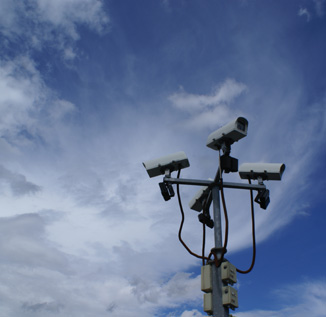There may be 160,000 CCTV cameras in operation by local authorities in England and Wales, according to a recent survey by the Surveillance Camera Commissioner (SCC). Why is this important? Because this represents the regulated sector of video surveillance, writes Peter Webster, director, The CCTV User Group.
It means that the rest of the six million or so cameras (if you believe the figures quoted in the media) are not subject to regulation under the Protection of Freedoms Act 2012 and don’t fall under the purview of the SCC.
The SCC, Tony Porter, recently conducted his survey of local authorities in England and Wales to better understand compliance with the regulatory guidance.
The relevant law is contained in Section 33(1) of the Protection of Freedoms Act 2012 (PoFA) while the regulatory guidance is contained in the Surveillance Camera Code of Practice (June 2013).
Section 33(1) sits in Part Two, Chapter One of the PoFA which covers “Regulation of CCTV and other surveillance camera technology” and states: “A relevant authority must have regard to the surveillance camera code when exercising any functions to which the code relates.”
It basically imposes a duty on relevant authorities – which includes local government and police forces but excludes other major users of CCTV including universities, railways, shopping centres and other quasi-public spaces – to have “regard to” the Surveillance Camera Code of Practice but doesn’t make failure to do so in and of itself a criminal or civil issue.
However, the Code is admissible in evidence, and a court or tribunal can take into account a failure to have regard to the Code in any judgements. Hence, the SCC’s interest in understanding the level of compliance with his Code.
The cost of un-regulation
The survey received a response from 183 local authorities which was about half of the local authorities contacted. These local authorities reported a combined 6,000 systems and 80,000 cameras. Most of these were traditional CCTV systems, but the SCC noted that it also includes dashboard cameras and body-worn video.
From this, we can extrapolate that the maximum number of CCTV cameras operated by local authorities is likely to be no more than 160,000. If the total number of CCTV cameras in operation in England and Wales is six million, as some studies have suggested, then this means that the PoFA overlooks the vast majority, leaving us with a largely unregulated CCTV industry.
Why is this important? Because CCTV is inherently intrusive. Although we wouldn’t want to ban it – it has a great track record in the investigation of crime and disorder – we need to carefully manage its use to prevent abuses.
We also need to recognise that artificial intelligence (AI) is making it increasingly possible to extract subject data from CCTV through facial recognition and behavioural analysis.
And IP CCTV systems are vulnerable to cyber attacks like any other IT network, meaning that CCTV systems can be, among other things, held to ransom, mined for personal data, infected with malware and used as platforms for launching attacks against other IT systems.
Further reading from the Group: Is your CCTV system cyber secure?
Compliance
The SCC found that compliance levels, as measured by his Self-Assessment Tool (SAT), for most of the main town centres systems was high, and this is a credit to the work he has done in raising awareness of this. The CCTV User Group is pleased to have been part of this awareness raising, including featuring the SCC as a keynote speaker at many of our annual conferences and assisting in the creation of new standards.
However, away from town centres, levels of compliance were lower. It seems clear that some operators of public space CCTV feel that they can disregard the PoFA, but this is a not an approach that the CCTV User Group can support. Compliance may not be cheap, but the cost is less than regulatory fines or failures in court where evidence is discredited for being unlawfully collected or handled.
We would urge those who operate CCTV systems, even if they are not included in the PoFA as a relevant authority, to voluntarily comply with the Code. This would include universities, shopping centres, railway stations and train operators, and other quasi-public spaces. The CCTV User Group and NASCAM has helped many organisations to understand and reach the required standards and this contribution has been recognised by the SCC.
The future
Tony Porter’s term as SCC is coming to an end in December. As only the second person to hold this post, he has made a significant and hopefully lasting contribution to the regulation of CCTV in England and Wales through his endless determination and energy promoting the Code and supporting our industry to continuously improve the manner in which we operate CCTV across England and Wales.
Going forward, the government is planning to combine the role of SCC with that of the Biometrics Commissioner, a move which has the potential to dilute the effectiveness of the SCC’s office at a time when the risk from mismanagement of CCTV is only growing.
Meanwhile, the Code is overdue for revision. With his experience, this should have been done by the current SCC but due to lack of time in Parliament, it will (eventually) fall to his successor to spearhead this. The CCTV User Group stands ready to work with the next SCC as we have done for years with the first two commissioners.
About the author
Peter Webster is director of the CCTV User Group, a UK membership body for managers, manufacturers, suppliers and consultants of video surveillance systems. Visit www.cctvusergroup.com.
Picture by Mark Rowe; CCTV, Maidenhead.










